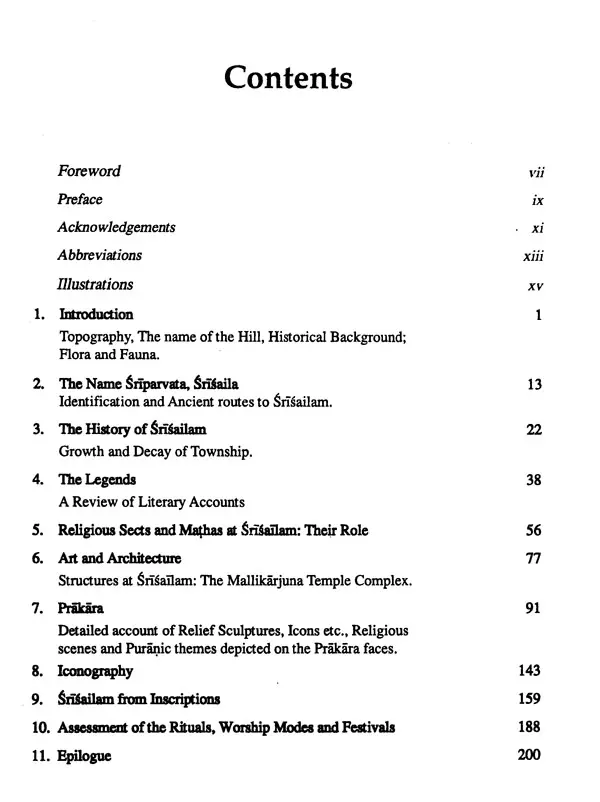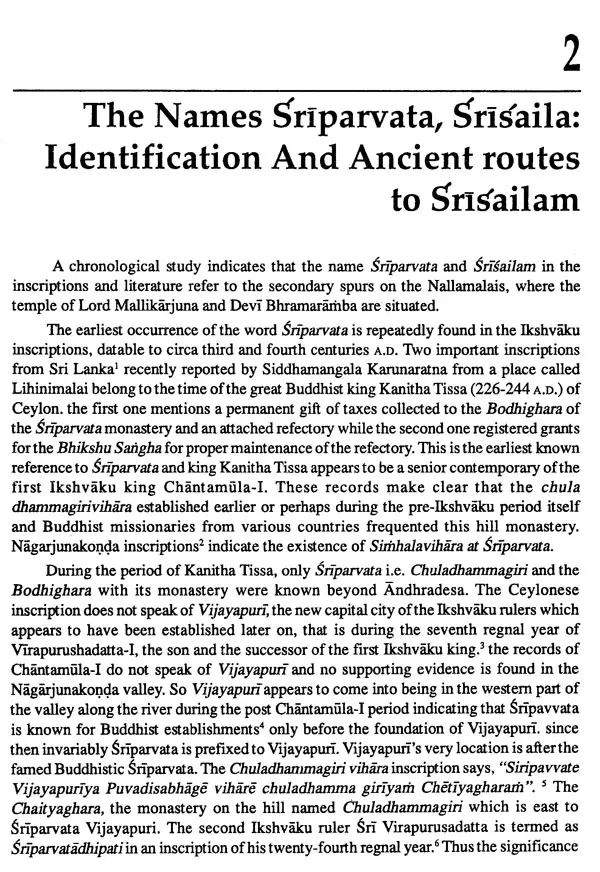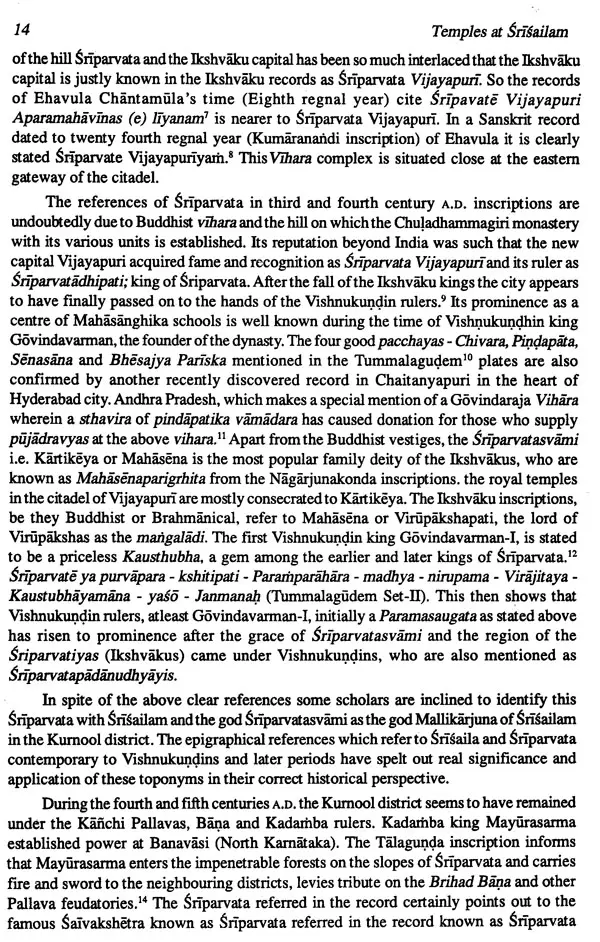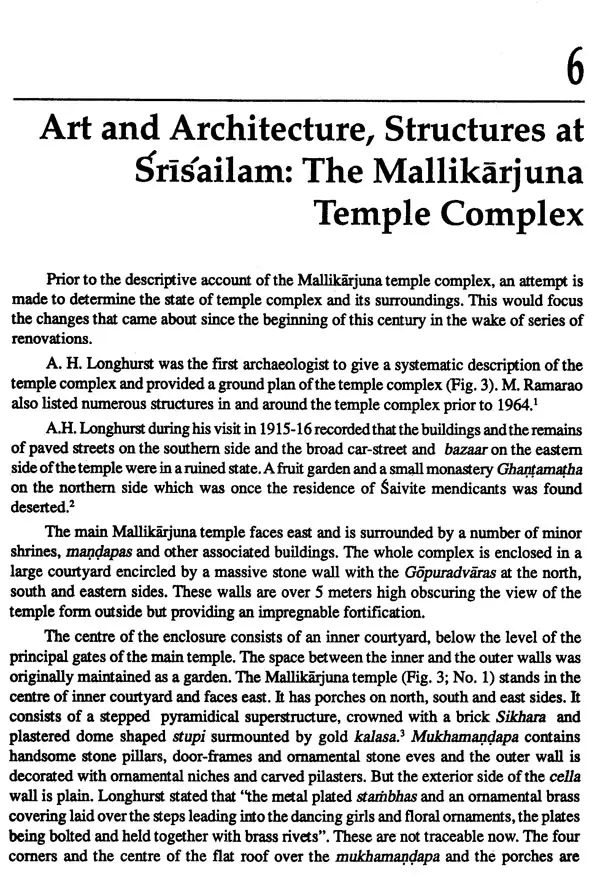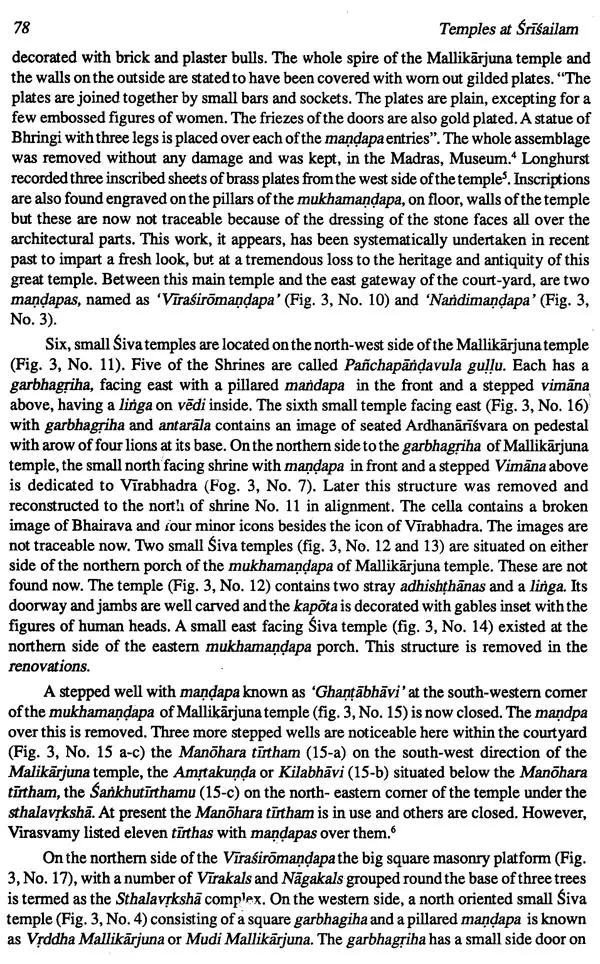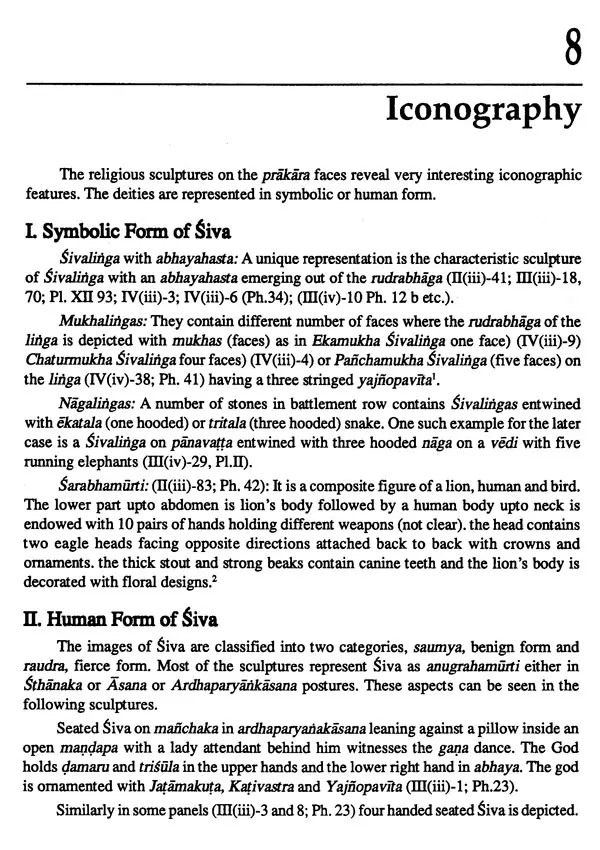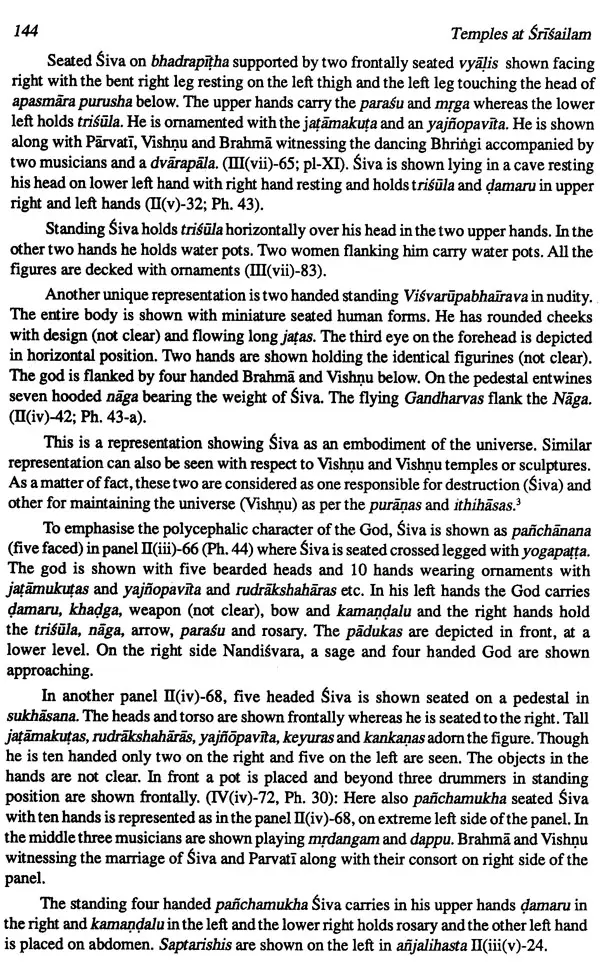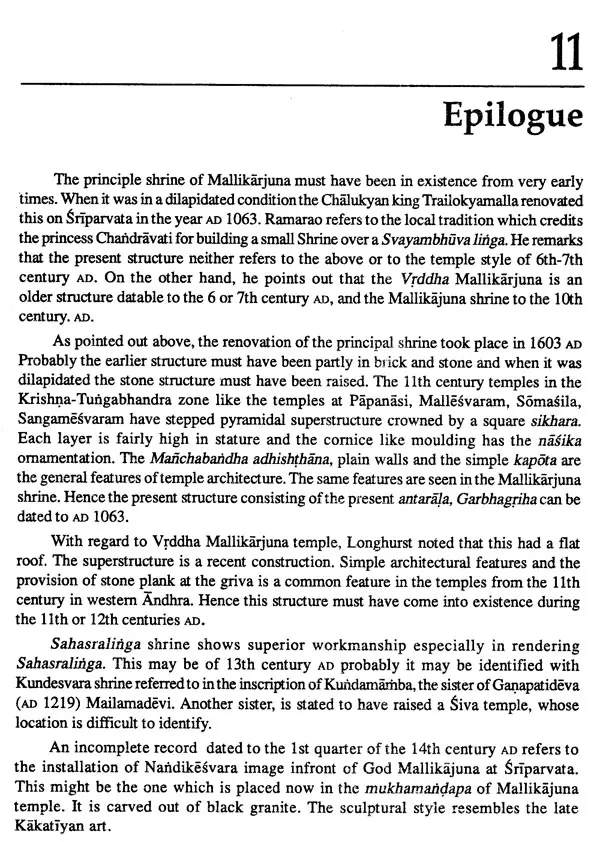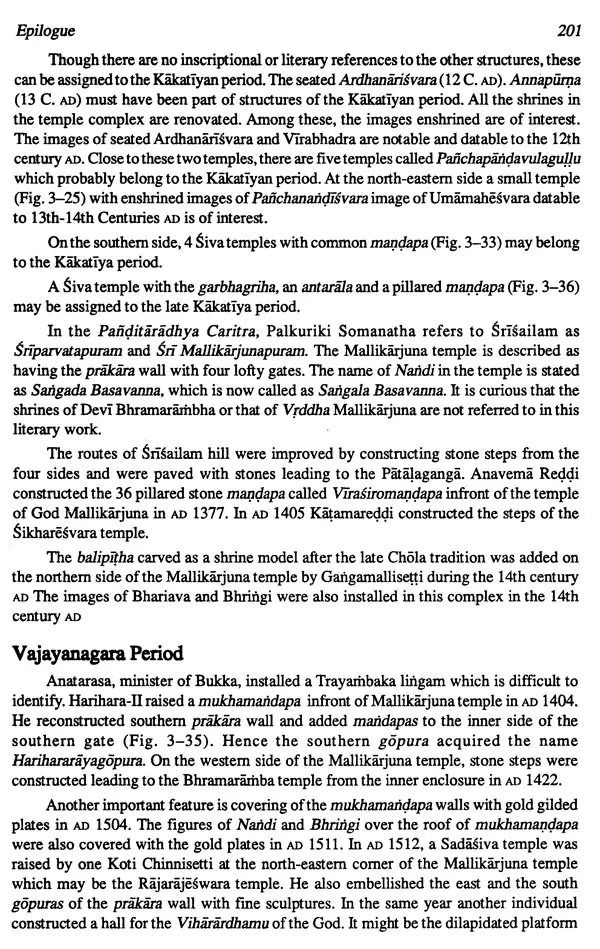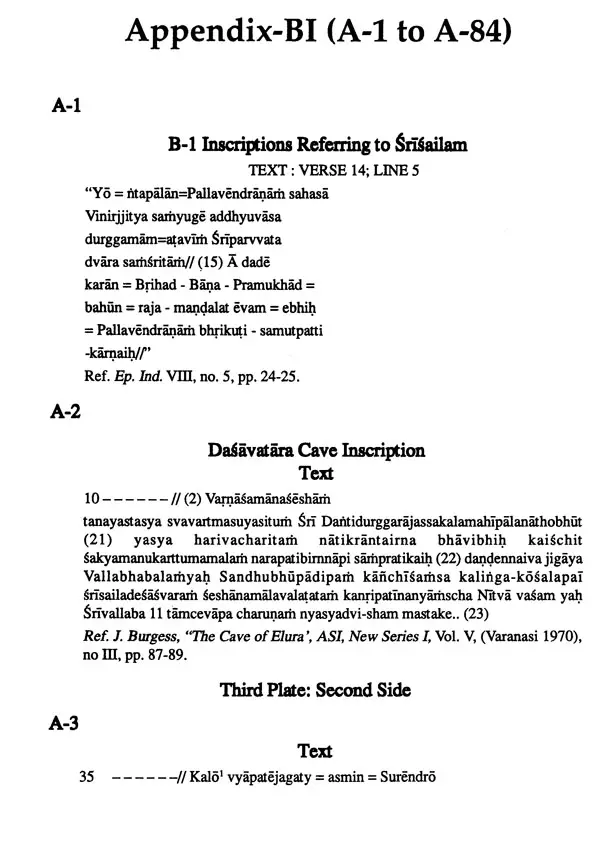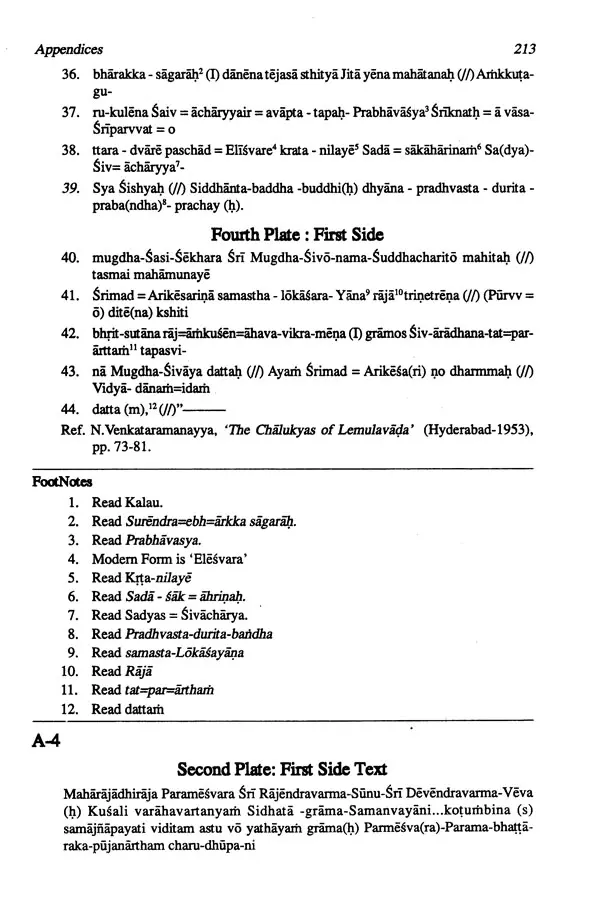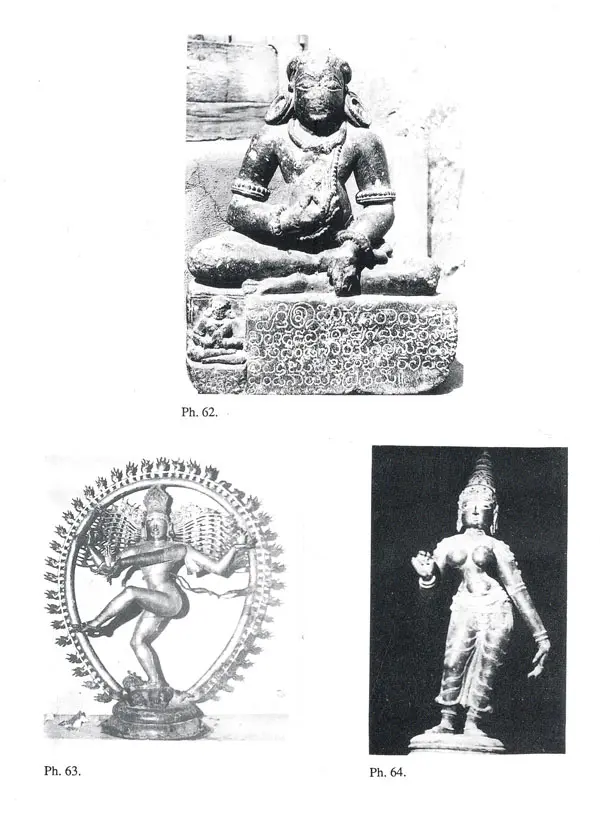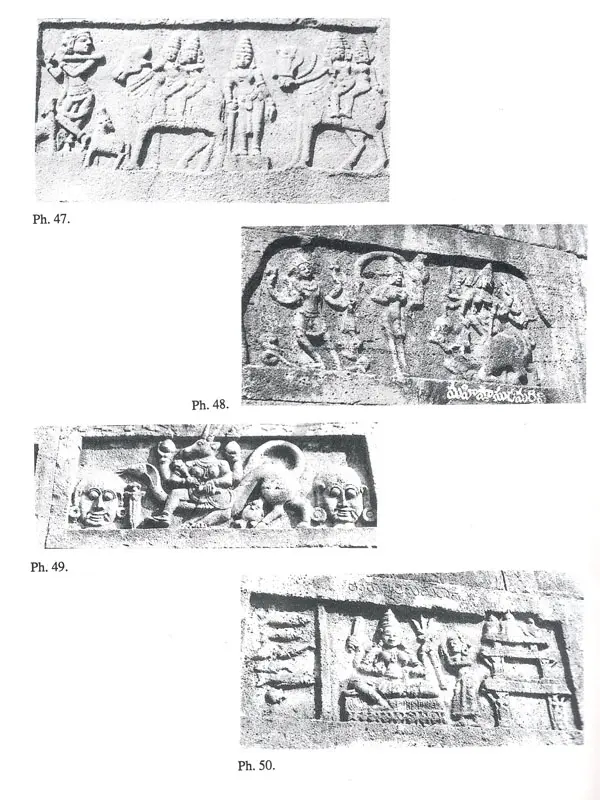
Temple At Srisailam- A Study of Art, Architecture, Iconography and Inscriptions
Book Specification
| Item Code: | UAO393 |
| Author: | V. Anuradha |
| Publisher: | Agam Kala Prakashan, Delhi |
| Language: | English |
| Edition: | 2002 |
| ISBN: | 8173200440 |
| Pages: | 332 (B/W Illustrations) |
| Cover: | HARDCOVER |
| Other Details | 10.00 X 7.50 inch |
| Weight | 960 gm |
Book Description
Srisailam in Andhradesa is a renowned Saivakshetra and has a hoary past. Together with two more sacred Lingakshetras, Kalesvaram on the north and Daksharama on the east, constituted ancient Andhra, which was then known as Trilingadesa. In the early medieval period. Srisailam rose to prominence as a pilgrim center with Alampur, Umamahesvaram, Siddhesvaram and Tripurantakam serving as gateways, thus contributing to the colorful, religious and cultural life of the Andhras. Srisailam was referred as Sriparvata, Srisaila, Mallikarjunam, Parvatam, Srigiri, Srisaila Mallikarjunam and Srikailasa in many inscriptions, literary texts and the Puranas. It is rich in legend and religious tradition. Historically, this holy centre with surrounding regions was associated with all the dynasties that ruled Andhradesa. The main sects of Saivism: Pasuputas, Kalamukhas, Kapalikhas and Virasaivas along with Siddhas and Nathas, enriched the religious life of Srisailam. The main temple complex: Bramaramba Mallikharjuna flourished as a great center where Art and Architecture and religious cults grew to maturity.
The antiquity of the place is linked with sanctity. Therefore, it is difficult for any researcher to probe into the textual literary and Archaeological sources and date the temples along with the gods enshrined therein. The present work of Anuradha Vemulapalli is an indepth study of all the temples of this place. their growth, rituals and life surrounding them along with a critical study of the Art and Architecture, Iconography and inscriptions associated with them. The most important and substantial contribution is an exhaustive documentation of Prakara sculptural wealth.
For the first time, one gets a glimpse of the great Saivakshetra of the Mallikarjuna temple complex through drawings and photo illustrations. Besides, an analytical and correlative study of inscriptions and the associated literature was attempted for the first time, bringing to light the religious history of Srisailam.
The book is of lasting value for students as wells as scholars interested in the study of Saiva religious institutions and their activities.
Anuradha Vemulapalli is presently working as an Associate Professor in the Department of History and Archaeology, Nagarjuna University. She obtained her Master of Arts degree (M.A.) from Nagarjuna University in 1977 and was awarded the 'Tellakula Kanyakumari Memorial Prize' for securing the top rank in M.A, Ancient History and Archaeology. She did her Ph.D at Nagarjuna University in 1989. The present book is the outcome of her research work.
Before entering the teaching profession at Nagarjuna University in 1985, she was involved in various fieldwork-oriented projects in different capacities. She worked in the Srisailam excavation project (1978-1983) funded by the Government of Andhra Pradesh, as a Pottery assistant and a Technical assistant. She was associated with the transplantation of two temples from Sangamesvaram and Siddhesvaram in Kurnool district to a selected site, Bannuru. She also worked as a Research assistant (1977-1978) in the History Project Unit of Nagarjuna University, funded by the International Telugu Institute, Hyderabad. She joined in the Department of Archaeology and Museums, Government of Andhra Pradesh as a Guide lecturer and worked at Victoria Jubilee Museum, Vijayawada. She has numerous research papers to her credit focused on Art and architecture and religious history.
Srisailam with its fanes-Mallikarjuna and Bhramaramba pervaded the religious and social life of Andhra all through the ages. Among the self emanated (Svayambhu) Lingas Mallikarjuna kshetra at Srisailam is considered to be most celebrated one in the country. Together with two more sacred linga kshetras, Kalesvaram on the north and Daksharama Bhimesvara on the east, ancient Andhra acquired the name Trilinga desa. Srisailam gets included among the twelve Jyotirlinga kshetras of Bharata varsha. It is renowned as the most sacred, the prominent place for the growth of several sects of Saivism and a home for the smartas. Its hoary antiquity is attested by its mention in the great epic Mahabharata. In the early medieval period, Srisailam rose to prominence as a pilgrim centre with Alampur, Umamahesvaram Siddhavatam and Tripurantakam serving as the gateways contributing to the colourful religious and cultural life of the Andhras. With the advent of Virasaivism, Srisailam rose to be its principal seat. Thus the main sects of Saivism-the pasupatas, Kalamukhas, Kapalikas and Virasaivas, besides, the Siddhas and Nathas enriched the religious life of Srisailam. The main temple complex going with the name Bhramaramba-Mallikarjuna flourished as a great centre where art, architecture and religious cults grew to maturity. This work aims to present a detailed history of the temples at Srisailam in all their aspects.
This holy place was known to the Indologists all over the world from the late 18th century, after Col. Colin Mackenzie visited the place and described it extensively. H Krishna Sastri published some hundred inscriptions of the place in the beginning of the First World War (1914-1915). A few years later, A. H. Longhurst gave the first archaeological description of the entire site (1917-1918). Srisailam has thus attracted the attention of many reputed scholars and earned a permanent place in the hearts of millions of Indians.
The antiquity of the place is linked with sanctity. It is, therefore, difficult for any researcher to probe into the textual, literary and archaeological sources and fix up the date of the temples and the Gods enshrined therein. The present attempt however, is an indepth study of all the temples of this place, their growth, rituals and life surrounding them, besides critical study of the art and architecture, iconography and inscriptions associated with them.
1. The holy place of Srisailam is known to indologists since the end of the 18th century, when C. Mackenzie visited the place and described it. H. Krishna Sastri published some hundred inscriptions in situ at the beginning of the First World War (1914-1915). A few years later, A.H. Longhurst gave the first archaeological description of the entire site (1917-1918). The bibliography of the subject was enriched by the monograph of M. Rama Rao (1967) and by the pamphlet of P.V. Parabrahma Sastry (1982), each one making contributions of the study of Srisailam, from the points of archaeology, history and religion.
In this region of pilgrimage in Andhra Pradesh sacred to the Deccan Saivites, archaeological and epigraphical research has received an impetus in recent years as a result of the hydro-electric project undertaken in the lower valley of the Krsna (see B. Dagens, Entre Alampur at Srisailam, 2 vols. Pondicherry 1984). the thesis of Mrs. Anuradha thus profits by the research already done on the subject and at the same time it contributes to the study of Srisailam. Therefore it was desirable to deal with this religious centre of Deccan under all its aspects, exploiting all available sources-archaeological, epigraphical and literary. One can appreciate the wealth of documents presented in the thesis. There is no doubt that this work would prove to be an indispensable source book on temples of Srisailam.
II. Smt. V. Anuradha has given a detailed account of this great Saiva Kshetra which has earned a place in the hearts of millions of Indians. The antiquity of the place is linked with sanctity. It is, therefore, difficult for any researcher to probe into the textual, literary and archaeological sources and fix up the date of the temples and the Gods enshrined therein.
The presiding deities of Srisailam are Malikarjuna and Bhramaramba. Literary sources credit Srisailam as a Saivakshetra of hoary antiquity. The growth of temples and institutions of various sects of Saivism like the Pasupatas, Kapalikas, Kalamukhas, Mattamayuras, Virasaivas etc. and their influence over Andhradesa makes an interesting study. Architecturally the existing temples do not present any significance. But the pervading influence of Srisailam as a focal point of Saiva sects is responsible for attribution of sacredness and greatness in the Purana and Kavya literature. Pilgrim tracks to the Srisailam are endowed with the shrines and each cardinal point develops as a temple centre and is termed as the gateway to Srisailam. With the growth of Virasaivism from 12th century AD Srisailam attained great popularity as a kshetra. As a result, Virasaiva hagiology has developed centering around Srisailam and its greatness.
The present attempt is a study of the place, its history, the temples and the institutions besides the Saiva sects, their emergence and growth.
The source material to reconstruct the history of Srisailam is chiefly the literature and the epigraphs available from the 11th century AD. Epigraphs outside Srisailam, however, refer to the temple from the 8th century AD. Hence much reliance has to be placed on literature with the aid of epigraphy and art.
The earliest reference to Srisailam and to the presiding deities Siva and Devi is found in the Mahabharata'. The secular literary works like Subandhu's Vasavadatta, Bhavabhuti's Malatimadhava, Banabhatta's Kadambari and Harsha Charitra refer to Srisaila Mallikarjuna as a centre for Kapalika and tantric cults. Adisankara calls the Devi as Bhramaramba in his works?. Till the 11th century AD the references to Srisailam are brief.
In the purana literature - Srisailakhanda of Skandhapurana (17th century AD) vividly describes the sacredness and greatness of Srisailam hill' and various shrines. Other puranas like Padmapurana, Vayupuraṇa, Brahmandapurana, Matsyapurana, Agnipurana Vishnupurana and Sivapurana refer to the sanctity of the hill. The earlier puranas briefly refer to it as a Saivakshetra. Along with the growth of Virasaivism, the corpus of literature glorifying Srisailam in the Telugu and Kannada languages also grew. Among these Palkuriki Somanatha's Panditaradhya Charitra is of great importance as it describes the topography, the temples, town and religious practices etc. It is a 13th century work and is based on personal acquaintance and devotion, but it merits serious attention in the reconstruction of the history of Srisailam.
**Contents and Sample Pages**

